



Click on the links above for accounts and photos of these trips.
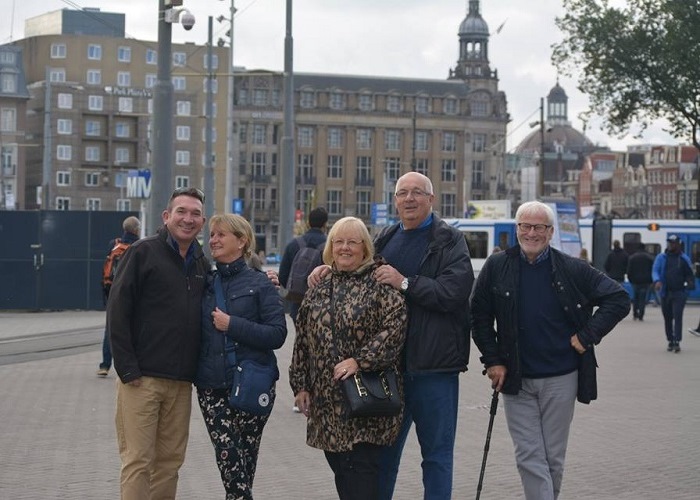 The gang just arrived in Amsterdam.
The gang just arrived in Amsterdam.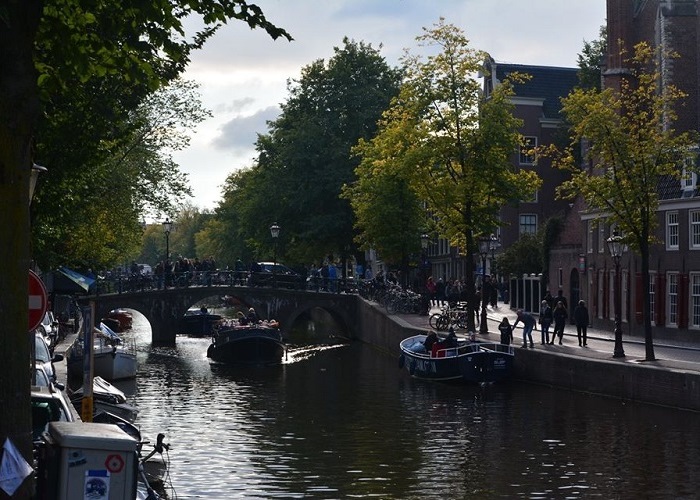 Amsterdam is recognisable immediately by pictures of the many canals that run through the town centre, with its bridges, river boats and bicycles everywhere. A pedestrian takes his divfe in his hands walking through the streets and narrow lanes as the bikes, motorised and otherwise seem to have right of way and travel at breakneck speeds along cycle paths which are only just distinguishable from normal paths. You really do have to have eyes in the back of your head.
Amsterdam is recognisable immediately by pictures of the many canals that run through the town centre, with its bridges, river boats and bicycles everywhere. A pedestrian takes his divfe in his hands walking through the streets and narrow lanes as the bikes, motorised and otherwise seem to have right of way and travel at breakneck speeds along cycle paths which are only just distinguishable from normal paths. You really do have to have eyes in the back of your head.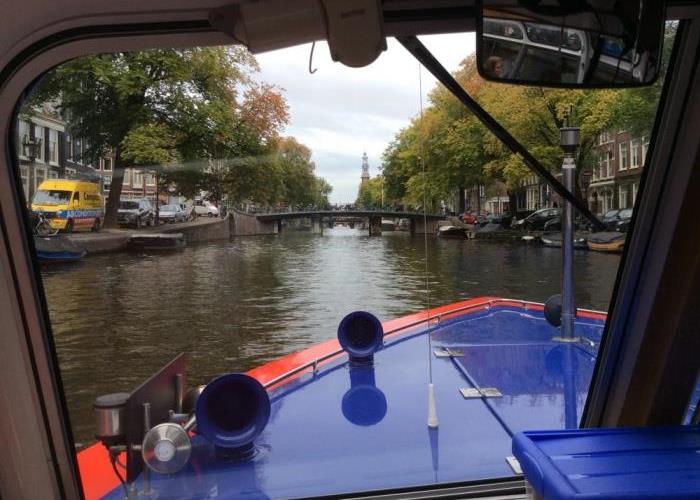 We took a canal cruise, organised by Leger, which although not especially interesting I guess is the thing to do in Amsterdam. Unfortunately, we had a boat without an outside deck which made taking photos a bit more difficult as we had to take them through the window. I suppose they have to cater for all weathers but we did see some open top boats that we could have hired independently - with the benefit of hindsight.
We took a canal cruise, organised by Leger, which although not especially interesting I guess is the thing to do in Amsterdam. Unfortunately, we had a boat without an outside deck which made taking photos a bit more difficult as we had to take them through the window. I suppose they have to cater for all weathers but we did see some open top boats that we could have hired independently - with the benefit of hindsight.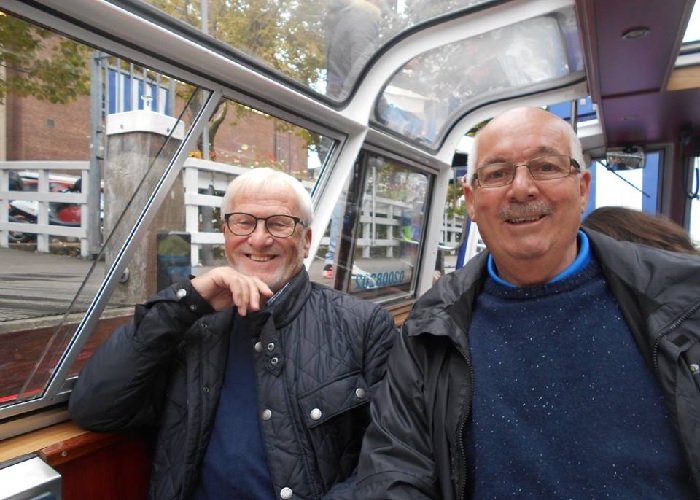
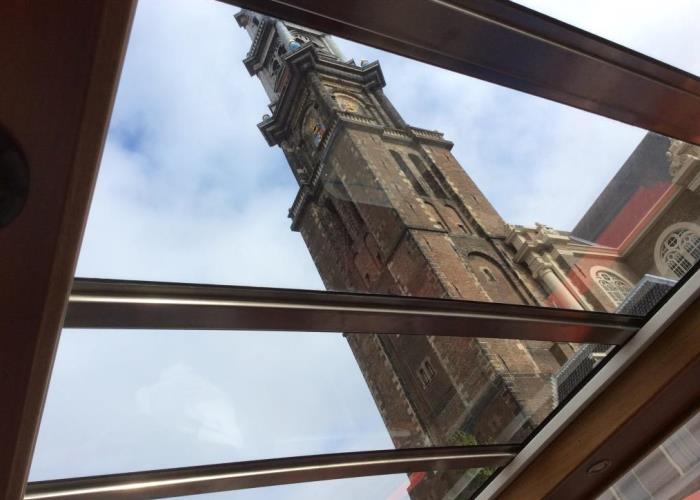 The Westerkerk (Western) Tower is the the most important and biggest Protestant church in the city, built in 1631, while its bell tower is the pride of Amsterdam, regarded by many, as a city symbol. I couldn't see anything particularly special about it but we viewed it only from the canal, through the top window of our boat, and did not see inside or get to climb the tower which provides a panoramic view of the city.
The Westerkerk (Western) Tower is the the most important and biggest Protestant church in the city, built in 1631, while its bell tower is the pride of Amsterdam, regarded by many, as a city symbol. I couldn't see anything particularly special about it but we viewed it only from the canal, through the top window of our boat, and did not see inside or get to climb the tower which provides a panoramic view of the city.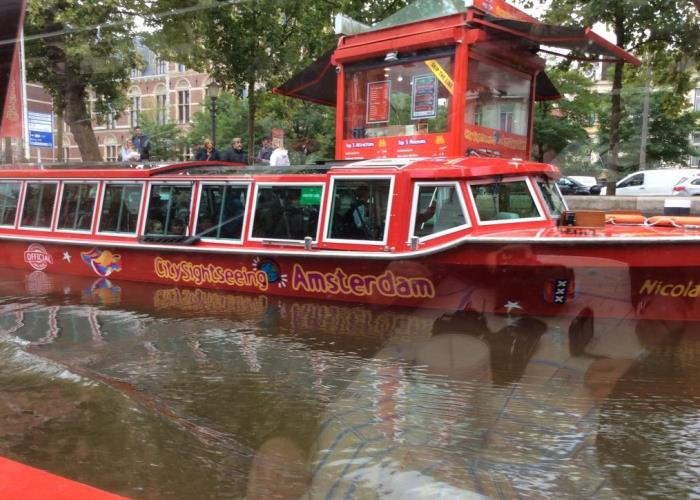 One of the many pleasure boats on the canals, seen through the window of our boat.
One of the many pleasure boats on the canals, seen through the window of our boat.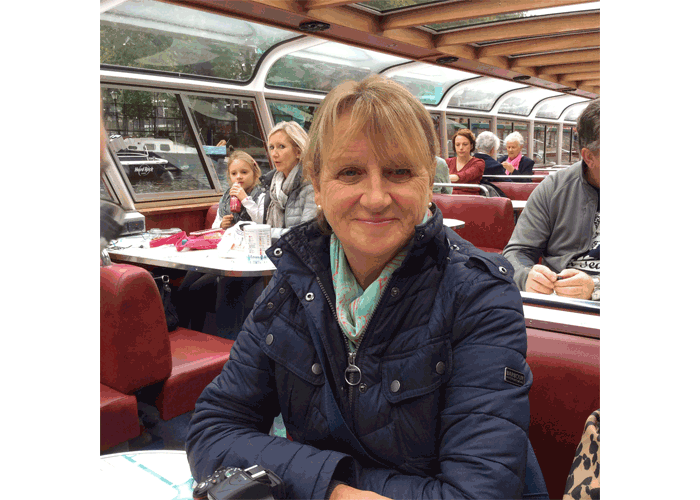
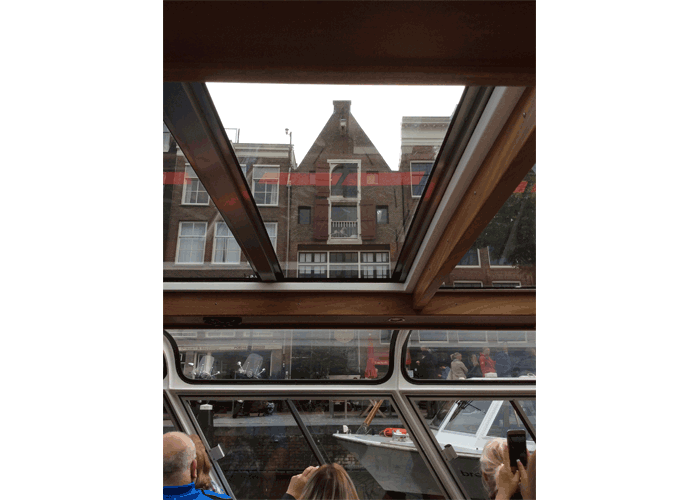 The house visible through the canal boat window was once the home of Annelies Marie "Anne" Frank, the jewish diarist
The house visible through the canal boat window was once the home of Annelies Marie "Anne" Frank, the jewish diarist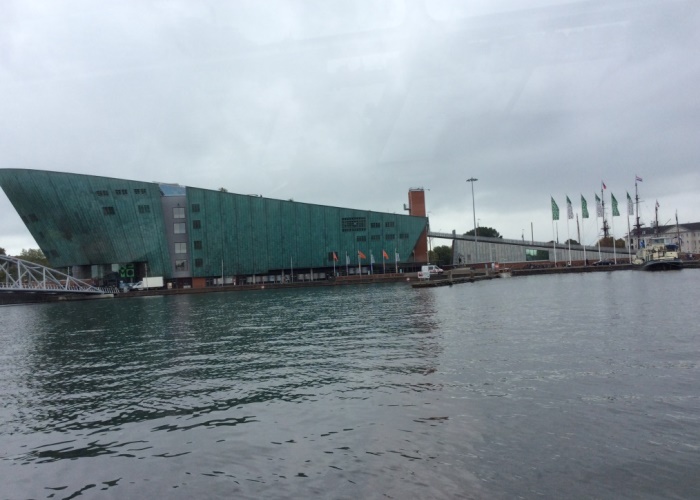 The NEMO science and technology museum is supposedly a fun place to take your kids to as it is aimed at making fun of science to 6-16 year olds with many interactive exhibits. In addition there is an open air museum of old ships and up on the roof a spectacular view of Amsterdam and a restaurant - a very popular place in the summer months.
The NEMO science and technology museum is supposedly a fun place to take your kids to as it is aimed at making fun of science to 6-16 year olds with many interactive exhibits. In addition there is an open air museum of old ships and up on the roof a spectacular view of Amsterdam and a restaurant - a very popular place in the summer months.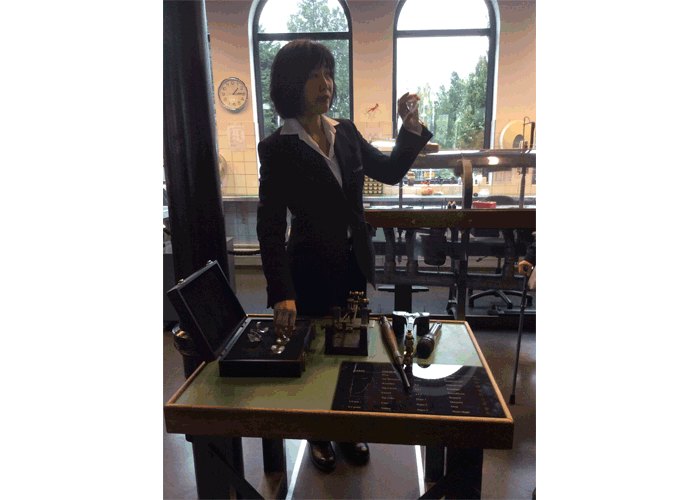 At the end of our canal cruise we went to the Gassan diamond factory where they demonstrated how diamonds are made. Gassan Diamonds was established in 1945, just after the end of the Second World War, by Samuel Gassan, as a business specialising in the import and export of raw and cut diamonds. Gassan’s diamond cutters have been working to create the perfect, brilliantly cut diamond for decades; diamonds originally had 57 facets, but the Gassan cutters have since developed a unique, patented cut that has no less than 121 facets. The increased number of facets gives the diamond even more brilliance. I found the talk that the lady gave to be very informative and enjoyed the tour of the factory.
At the end of our canal cruise we went to the Gassan diamond factory where they demonstrated how diamonds are made. Gassan Diamonds was established in 1945, just after the end of the Second World War, by Samuel Gassan, as a business specialising in the import and export of raw and cut diamonds. Gassan’s diamond cutters have been working to create the perfect, brilliantly cut diamond for decades; diamonds originally had 57 facets, but the Gassan cutters have since developed a unique, patented cut that has no less than 121 facets. The increased number of facets gives the diamond even more brilliance. I found the talk that the lady gave to be very informative and enjoyed the tour of the factory.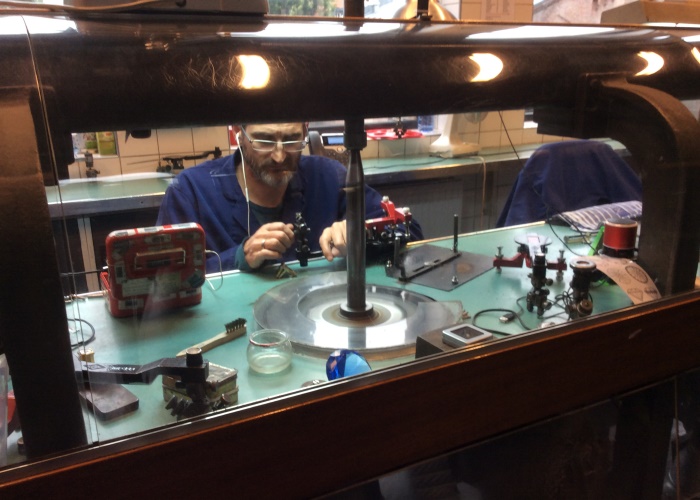 Whilst we were there we watched a couple of cutters working on the diamonds and it was quite interesting watching how they used diamond dust recovered from the cutting process and coated on to revolving, grinding discs to then provide a suitable grinding tool for further processes; understandably they have to use a hard material such as diamond to cut a similarly hard material and in this way nothing gets wasted. This process is completely manual and clearly highly skilled.
Whilst we were there we watched a couple of cutters working on the diamonds and it was quite interesting watching how they used diamond dust recovered from the cutting process and coated on to revolving, grinding discs to then provide a suitable grinding tool for further processes; understandably they have to use a hard material such as diamond to cut a similarly hard material and in this way nothing gets wasted. This process is completely manual and clearly highly skilled.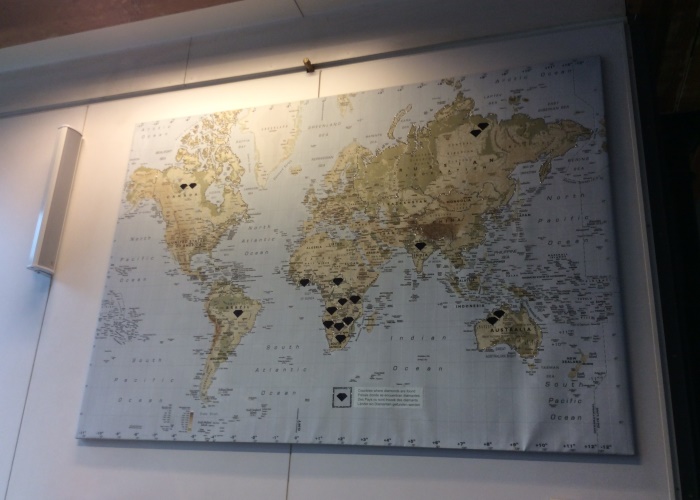 Diamond producing countries are in two major bands around planet Earth, the northern band and the southern band; a third center band also has diamonds but of lower quantity and value. The northern band includes Russia and Canada, the southern band includes Southern African states such as Botswana, South Africa and Namibia, as well as Australia. The center band includes the Ivory Coast and Sierra Leone in Africa, and Venezuela and Brazil in South America. Russia holds what is bediveved to be the world’s largest and richest diamond resources and are the world’s largest producer and exporter of rough diamonds by volume.
Diamond producing countries are in two major bands around planet Earth, the northern band and the southern band; a third center band also has diamonds but of lower quantity and value. The northern band includes Russia and Canada, the southern band includes Southern African states such as Botswana, South Africa and Namibia, as well as Australia. The center band includes the Ivory Coast and Sierra Leone in Africa, and Venezuela and Brazil in South America. Russia holds what is bediveved to be the world’s largest and richest diamond resources and are the world’s largest producer and exporter of rough diamonds by volume.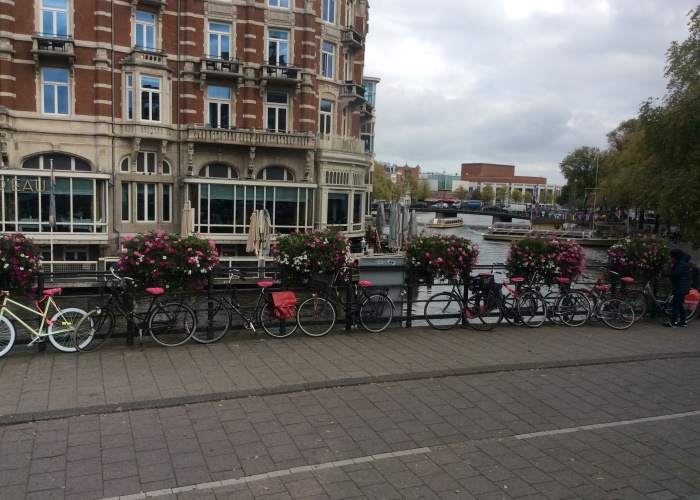 There were some beautiful flower arrangements all along the canals but it was somewhat spoilt by every spare railing having a bicycle chained to it. It's impossible to know for sure, but city authorities say there are well over 881,000 bikes in Amsterdam - more bikes than residents; each year between 12,000 and 15,000 bikes are fished up from city's canals.
There were some beautiful flower arrangements all along the canals but it was somewhat spoilt by every spare railing having a bicycle chained to it. It's impossible to know for sure, but city authorities say there are well over 881,000 bikes in Amsterdam - more bikes than residents; each year between 12,000 and 15,000 bikes are fished up from city's canals.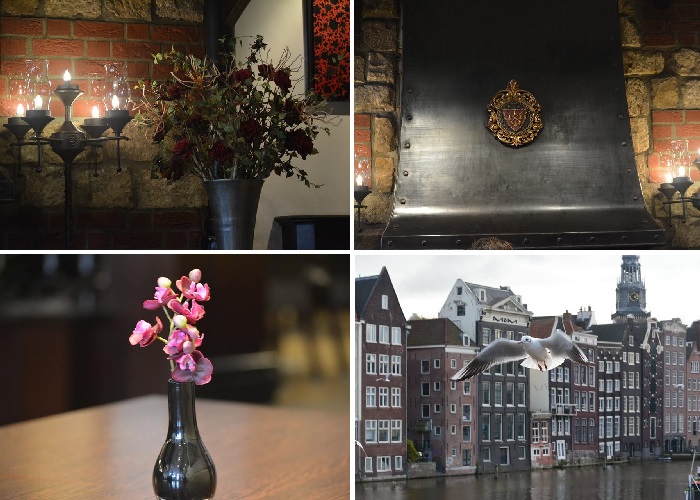 John experimenting with his new Nikon camera - a seagull in flight over the river Amstel and photos taken in one of the inevitable pubs we had a drink in.
John experimenting with his new Nikon camera - a seagull in flight over the river Amstel and photos taken in one of the inevitable pubs we had a drink in.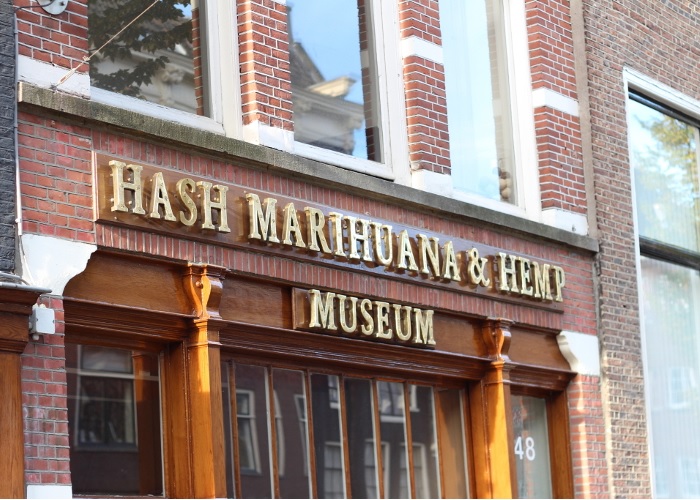 Most places have a natural history or a science museum, only in Amsterdam could you have a hash museum. Well for those of you who don't know - 'The Hash Marihuana & Hemp Museum is the oldest and most important museum in the world dedicated to Cannabis Sativa L., also known as hemp or marijuana. The museum manages and exhibits a unique collection that encompasses all aspects of cannabis, functions as a knowledge centre, facilitates scientific research and plays an important informative role'. So there you have it - straight from Wikipedia's mouth!!!
Most places have a natural history or a science museum, only in Amsterdam could you have a hash museum. Well for those of you who don't know - 'The Hash Marihuana & Hemp Museum is the oldest and most important museum in the world dedicated to Cannabis Sativa L., also known as hemp or marijuana. The museum manages and exhibits a unique collection that encompasses all aspects of cannabis, functions as a knowledge centre, facilitates scientific research and plays an important informative role'. So there you have it - straight from Wikipedia's mouth!!! 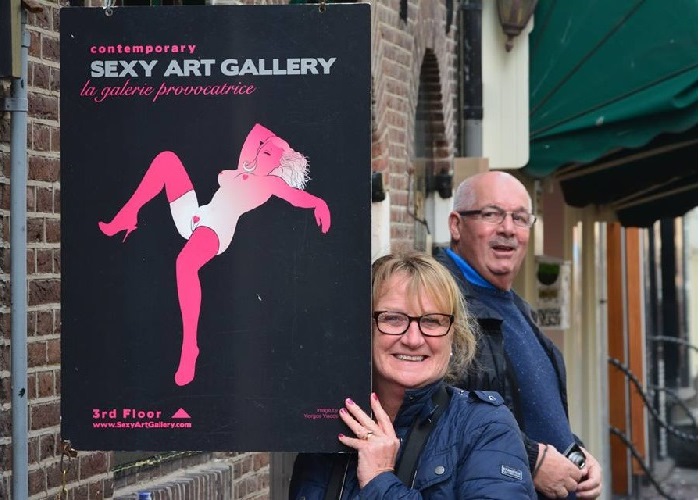 I'm not sure why Jane's got a smile on her face, LOL.
I'm not sure why Jane's got a smile on her face, LOL.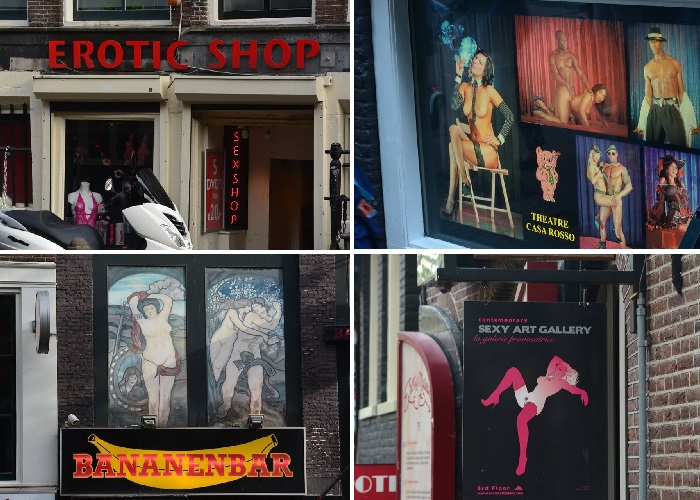 A small sample of the shops available in the red light district.
A small sample of the shops available in the red light district. John after coming out of one of those shop windows in the red light district (only kidding LOL
John after coming out of one of those shop windows in the red light district (only kidding LOL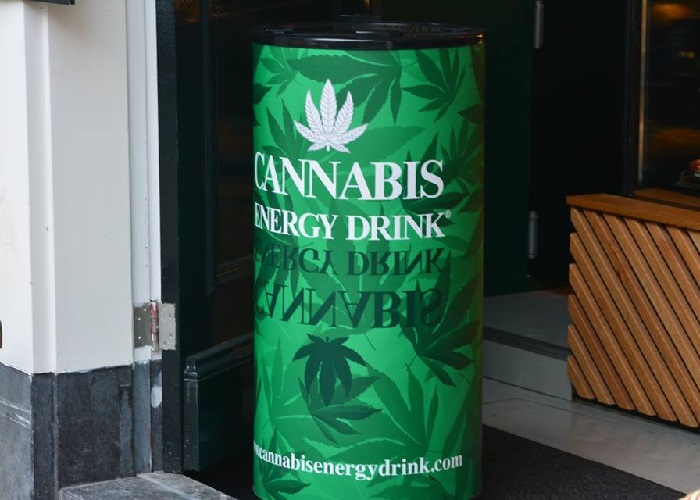 After his exertions John decided he needed a pick-me-up!
After his exertions John decided he needed a pick-me-up!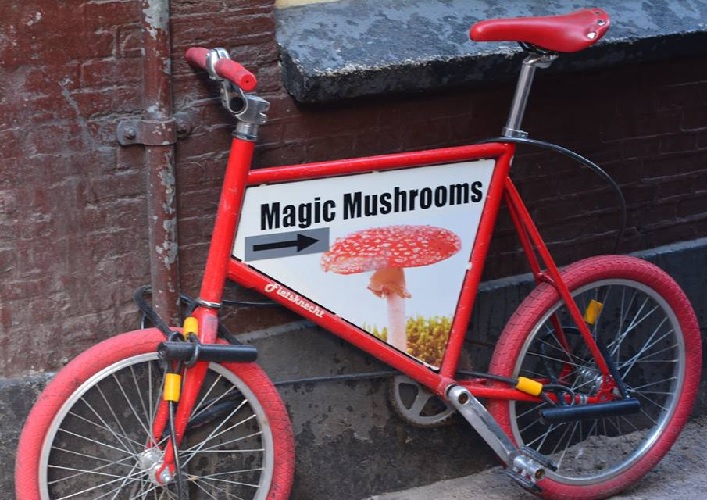 We guess this is the Amsterdam version of the pizza delivery bike!
We guess this is the Amsterdam version of the pizza delivery bike!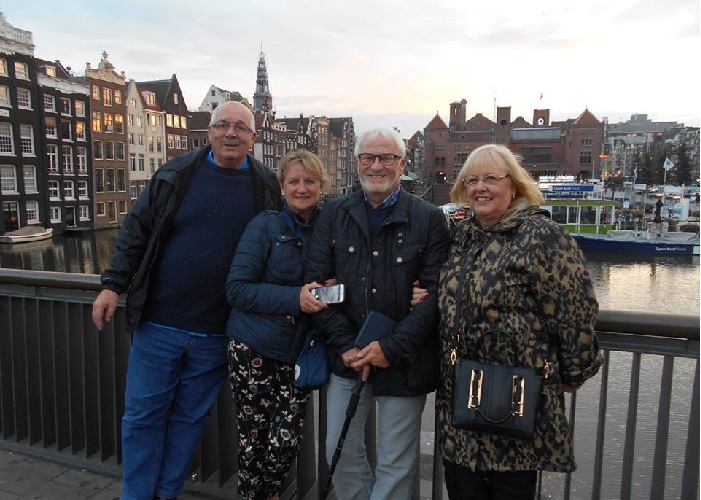 The gang, enjoying our trip to Amsterdam.
The gang, enjoying our trip to Amsterdam.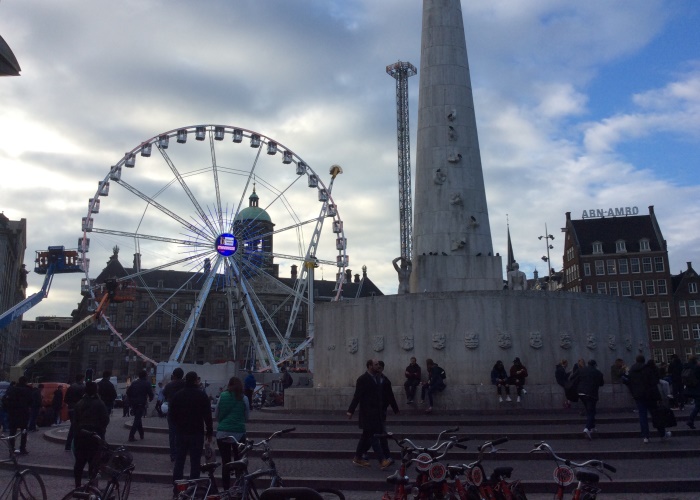 DAM square with its modern day ferris wheel; the square got its name from the original dam across the Amstel river, built in 1270 to link the settlements on either side of the river. In May 1945, two days after German capitulation, thousands of Dutch people were waiting for Canadian troops to arrive and were machine gunned by members of the Kriegsmarine, watching from their balcony above the celebrating crowds. Their motives were unclear and finally ended after a member of the resistance climbed into the tower of the royal palace and started shooting onto the balcony; around 33 people were killed and many more injured before German officers intervened and stopped the shooting.
DAM square with its modern day ferris wheel; the square got its name from the original dam across the Amstel river, built in 1270 to link the settlements on either side of the river. In May 1945, two days after German capitulation, thousands of Dutch people were waiting for Canadian troops to arrive and were machine gunned by members of the Kriegsmarine, watching from their balcony above the celebrating crowds. Their motives were unclear and finally ended after a member of the resistance climbed into the tower of the royal palace and started shooting onto the balcony; around 33 people were killed and many more injured before German officers intervened and stopped the shooting.